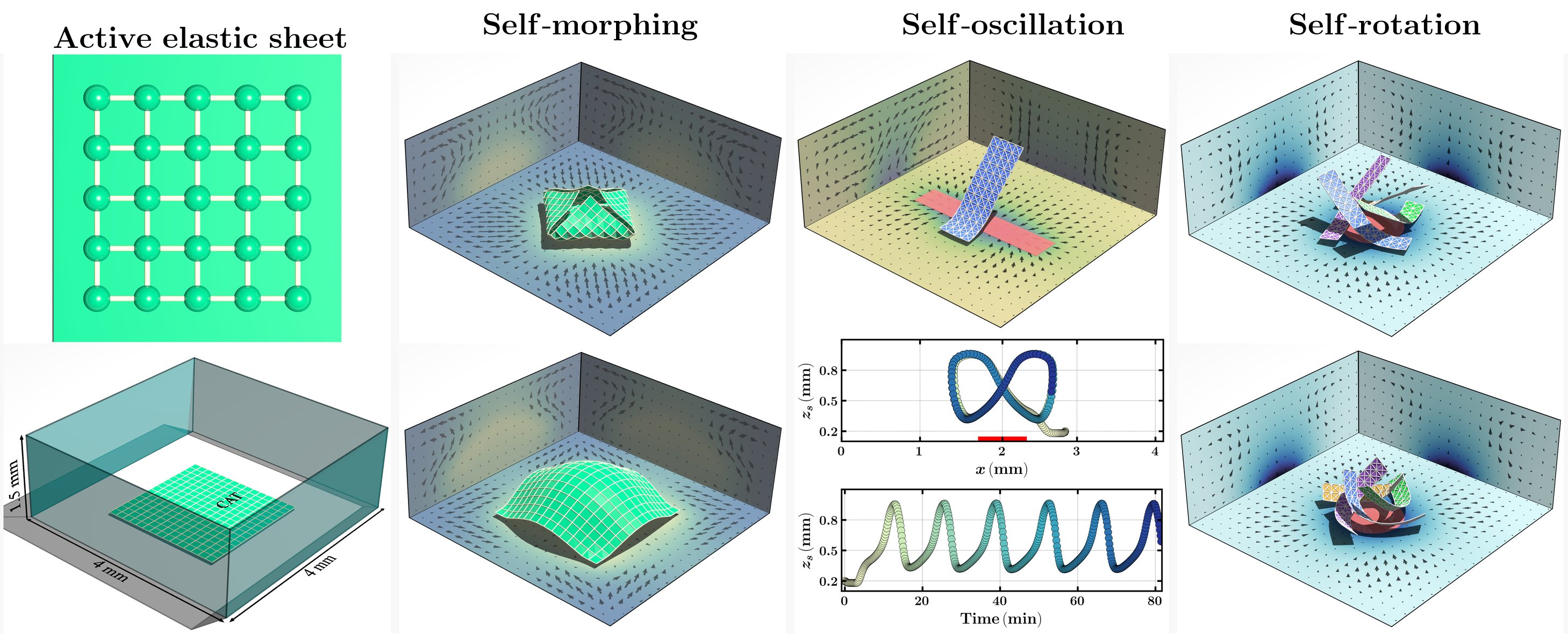The ability to translate chemical cues into mechanical action is a defining feature of living organisms. Inspired to create materials that exhibit analogous ``life-like” behavior, we focus on chemically active two dimensional sheets which is driven by self-induced fluid flows. In contrast to active hard spheres, a two dimensional sheet is sufficiently flexible that the flowing fluid drives not only the propulsion, but also the shape evolution of the sheet, transforming the 2D layer into a moving, three dimensional object. Moreover, the transported, evolving sheet affects the flow of the surrounding fluid. Hence, chemically active materials of higher dimensionality and increased flexibility can exhibit rich, cooperative interactions.
Self-morphing of active sheets
Two-dimensional responsive materials that change shape into complex three-dimensional structures are valuable for creating systems ranging from wearable electronics to soft robotics. We use catalyst-coated elastic sheets to generate controllable fluid flows, which transform the sheets into complex 3D shapes. Moreover, a single sheet that encompasses multiple catalytic domains can be transformed into a variety of 3D shapes through the addition of one or more reactants. Materials systems that morph on-demand into a variety of distinct structures can simplify manufacturing processes and broaden the utility of soft materials.Manna et al, Mater. Horiz. 7, 2314 (2020)
Self-oscillatory behavior of active sheets
Self-oscillating systems are resplendent in biology, enabling the beating of the heart, and the self-organization of slime mold. Through modeling, we design bio-inspired materials systems that spontaneously form shape-changing, self-oscillators, which communicate to synchronize both their temporal and spatial behavior. The distinctive combination of the hydrodynamic, fluid-structure, and steric interactions causes two sheets to form coupled oscillators, whose motion is synchronized in time and space. This breadth of dynamic behavior expands the functionality of the coupled oscillators, enabling soft robots to display a variety of self-sustained, self-regulating moves.Manna et al, Proc. Natl. Acad. Sci. U.S.A. 118, 12 (2021)
